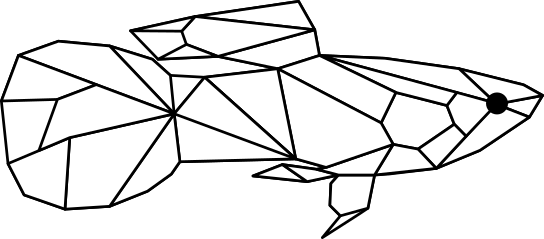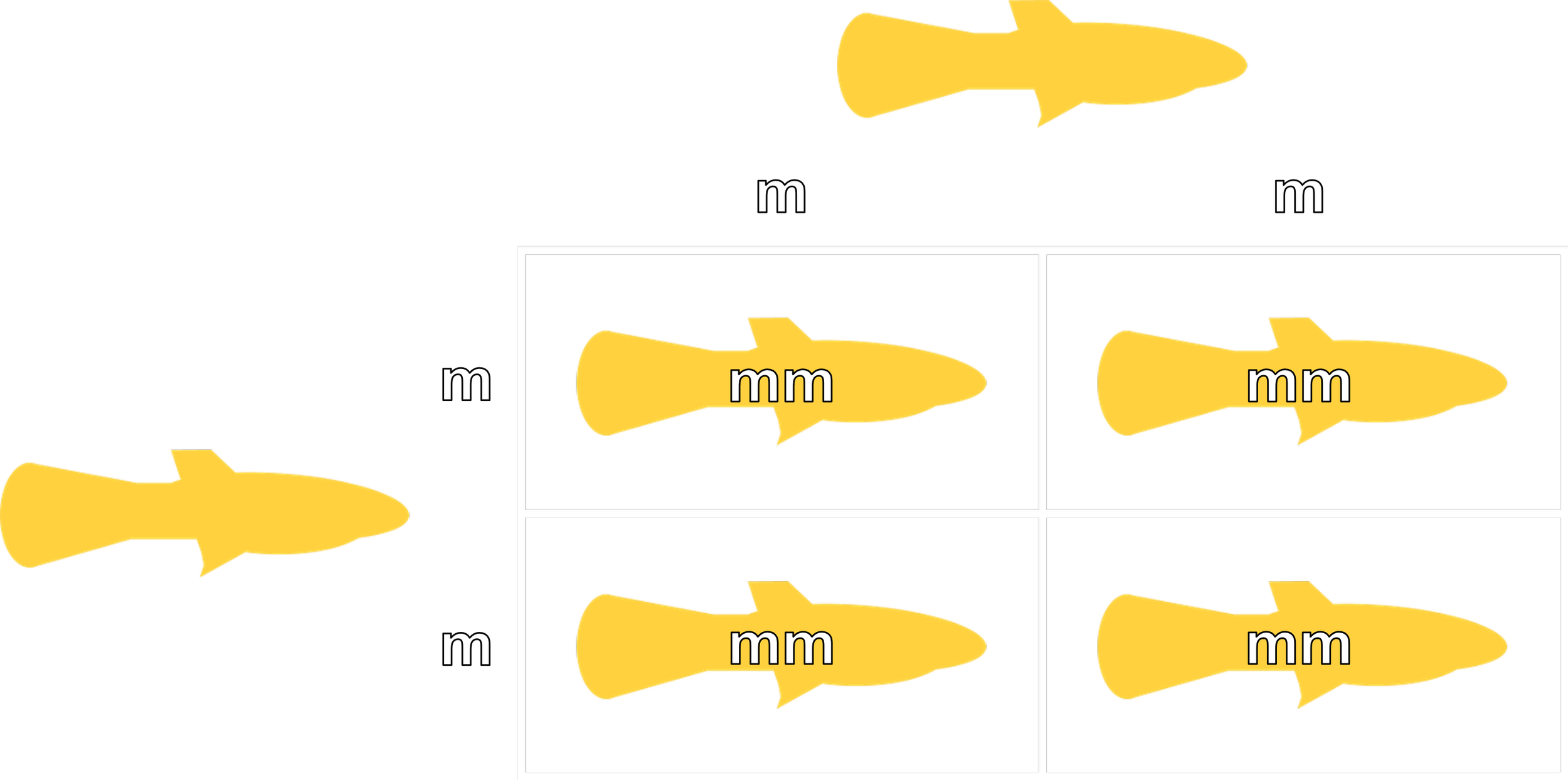
Note: Much of the information presented here is based on the work of Alan S. Bias and Carl Groenewegen, as published in their Poecilia reticulata: Domestic Breeder Trait Matrix Reference Guide.
The Magenta gene is a fascinating and highly prevalent gene in my project. It might seem counterintuitive that it plays a significant role in Snow White genetics, but I believe it's essential for the vibrant colors seen in my fish.
Genetics sources often describe Magenta (M) as both an autosomal dominant (above link) and an incompletely dominant gene. This is a bit confusing, but my breeding projects have led me to believe there's a difference in how it controls color versus fin size. This is just a working theory for now, but I'll share more of my observations later.
Essentially, the Magenta gene boosts red pigments and iridophores, while also converting yellow pigment cells to red. The result is a guppy with significantly more red color and it often has a magenta hue. Interestingly, if the guppy also has the Metal Gold (Mg) gene, the yellow, Metal Gold associated cells might not convert. On top of its color effects, Magenta can create concentrated patches of black melanophores and is also linked to reduced fin size.
These images compare guppies with and without a single copy of the Magenta (M) gene. On the left is a 7-week-old halfblack red rose tail guppy that does not carry Magenta (mm genotype). In contrast, the middle image shows a 7-week-old halfblack red rose tail hybrid, and the left image displays a 9-week-old hybrid (both with Mm genotype). Notice the distinct difference: the regular rose tail (mm) lacks the vibrant iridescent reds/magentas present in the two hybrids (Mm).
I believe the Magenta gene's role in the Snow White phenotype is due to its interaction with two other genes: Stoerzbach and European Blau.
Stoerzbach gives the guppy a metallic sheen and removes red and yellow pigments from the body, though not from the fins.
European Blau similarly removes red and yellow pigments from the body, but also reduces red coloration in the fins and decreases the presence of basal melanophores.
My theory is that Magenta initially works to proliferate and spread red coloration throughout the guppy. This red pigment is then subsequently reduced by both the Stoerzbach and European Blau genes, resulting in a guppy with a distinct white appearance.
The inheritance of the magenta gene is generally predictable and follows simple Mendelian genetics when only considering color. I'll treat this gene as autosomal—not located on the sex chromosomes—which means the sex of the parents doesn't influence the outcome.
The six most common breeding combinations between homozygous and heterozygous magenta guppies are detailed below. For illustrative purposes, I'll represent a guppy without magenta as a "colorless" blond guppy, though the same principles apply to the standard wildtype gray guppy. A guppy with magenta will be depicted with a redder tail and peduncle; however, the real-world effects may be more pronounced than shown.
MM or Mm
mm
The provided Punnett squares show the statistical probability of each offspring's genotype. For this single-gene cross, a simple 2x2 Punnett square is used, with each of the four squares representing a 25% probability for a given genotype.
Combination: 1
Combination: 2
Combination: 3
Combination: 4
Combination: 5
Combination: 6











